QNED vs QLED vs OLED TVs: What’s the difference?
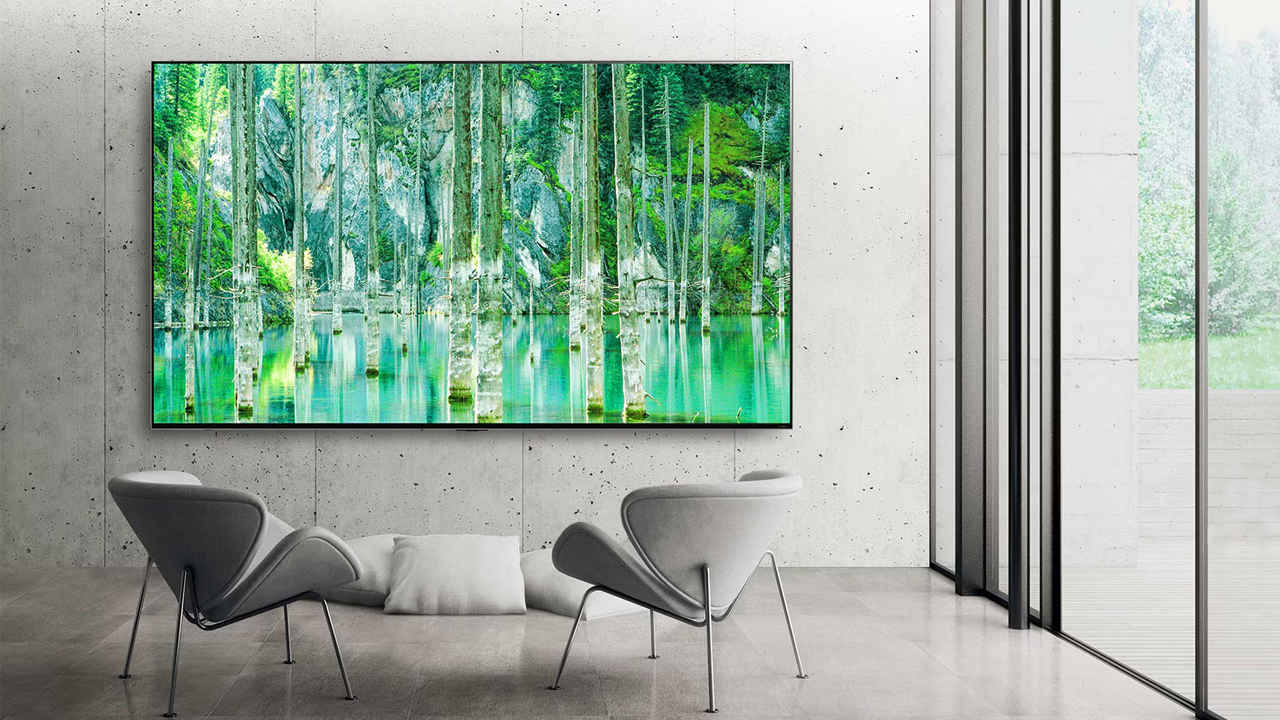
If you are looking to upgrade your TV, terms like QNED, QLED, and OLED may sound similar but are quite different. While there are many details to address here, simplifying things for those not familiar with display jargon, we would start with the broader classification as self-emissive and backlit.
 Survey
SurveySelf-emissive displays like OLED, QD-OLED, and micro-LED have pixels that emit their light, allowing for pixel-level lighting control, higher contrast, and brightness. These displays are relatively more expensive, and the general consensus is that they offer a better TV viewing experience.
On the other hand, when discussing QLED, QNED, Triluminous, and other such technologies, we are essentially referring to LCD TVs with a backlight. Manufacturers employ various technologies to improve the performance of these backlit displays and classify them with different names.
.
Also Check: MicroLED vs Mini LED vs OLED Displays: What’s the difference?
Why do LED LCD TVs need to enhance the quality of white light?
As you must know, colourimetry follows a trichromatic approach where white light is considered a combination of Red, Green and Blue light. LCD-based TVs eventually pass the white light from the backlight through a colour filter film to get Red, Blue and Green colours for different subpixels. So, to get the red colour, the filter will essentially block Red and Blue components in the white light and only let the red light to pass through (with some loss in quantum efficiency).
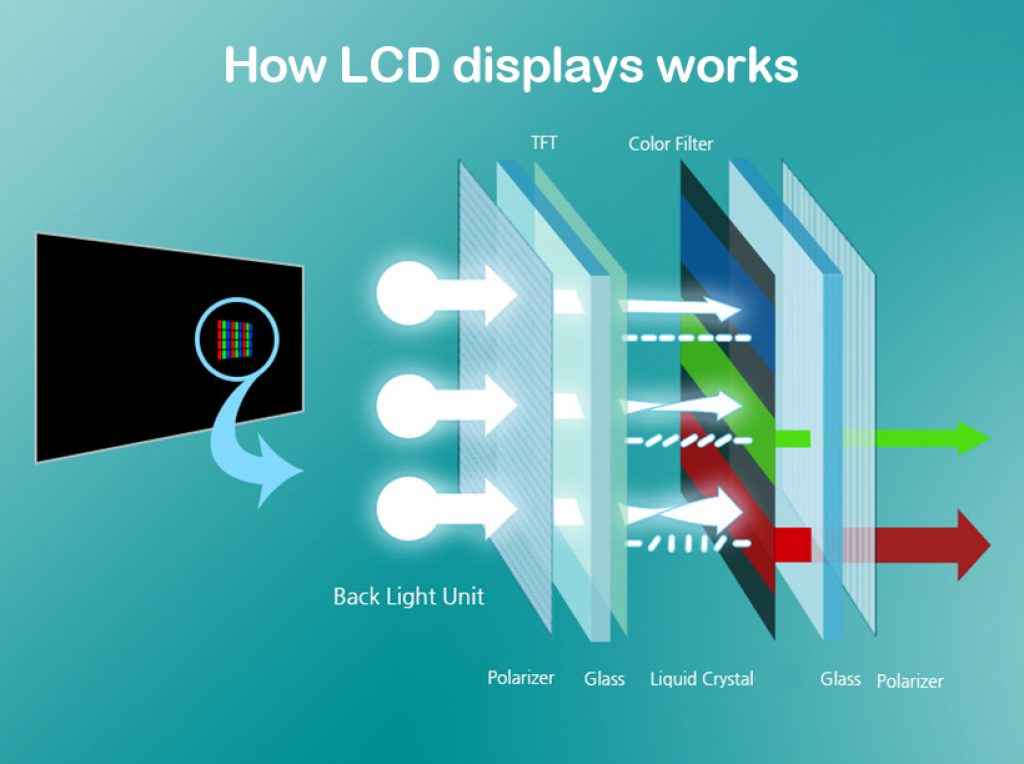
But what if your white light has more of the blue component and very less of Red and Green? In such cases, the TV struggles to reproduce the complete spectrum of Red and Green, especially the fully saturated shades.
To work around this problem, QLED TVs use Blue LEDs in the backlight and pass it through a Quantum Dot Enhancement Film (QDEF). This film has a matrix of tiny Quantum Dots that serve as extremely efficient colour converters. The blue light from the backlight falling on these Red and Green quantum dots excites them and they then release red and green light of the same quantum efficiency. So, the Blue light is essentially converted to red or green without any loss.
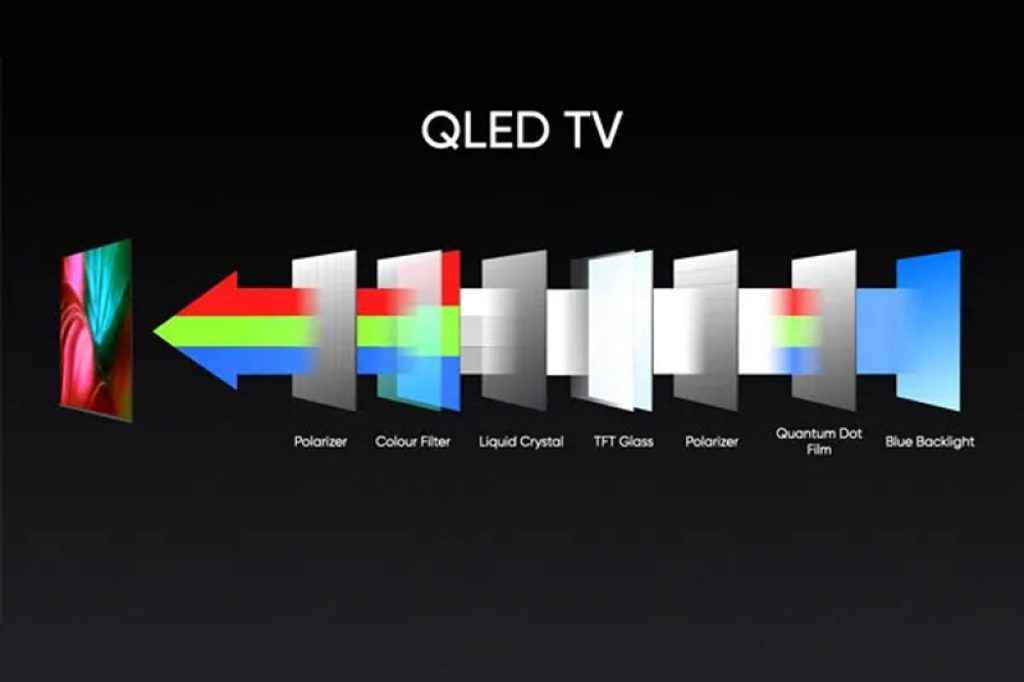
QDEF thus converts a balanced portion of Blue light to Red and Green, thus achieving a ‘purer’ or well-balanced white light with proper spectral power distribution, fit to reproduce wide colour gamuts.
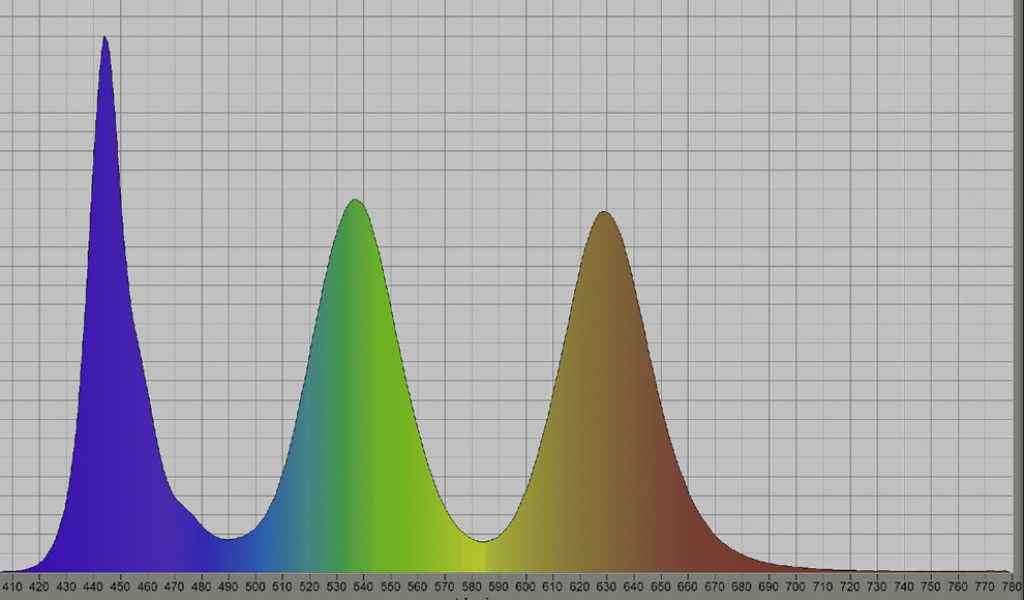
Implementing Quantum Dot hardware in an LCD TV is quite simple. In practice, if you teardown your QLED TV, Quantum Dot Enhancement Film will be just a thin, yellowish butter paper-like film sandwiched between other backlight films (like diffuser film, brightness enhancement film, etc).
Display manufacturers may use other techniques to achieve a more balanced white light like a phosphor layer next to LEDs. And that is one of the techniques Sony integrates into its Triluminous displays.
QNED Vs QLED
Now that we have cleared the basics, we are in a better position to differentiate between QNED and QLED TVs.
QLED is a Samsung trademark for its TVs that use Quantum Dots Enhancement Film. The term isn’t exclusive to Samsung since many other brands also use the QLED moniker for marketing their panels using the same technology. Legacy brands like LG and Sony, however, steer clear of “QLED” and have their proprietary technologies for enhancing backlight.
LG QNED stands for Quantum-Dot NanoCell LED and it combines Quantum Dots Enhancement Film with LG’s Nanocell technology.
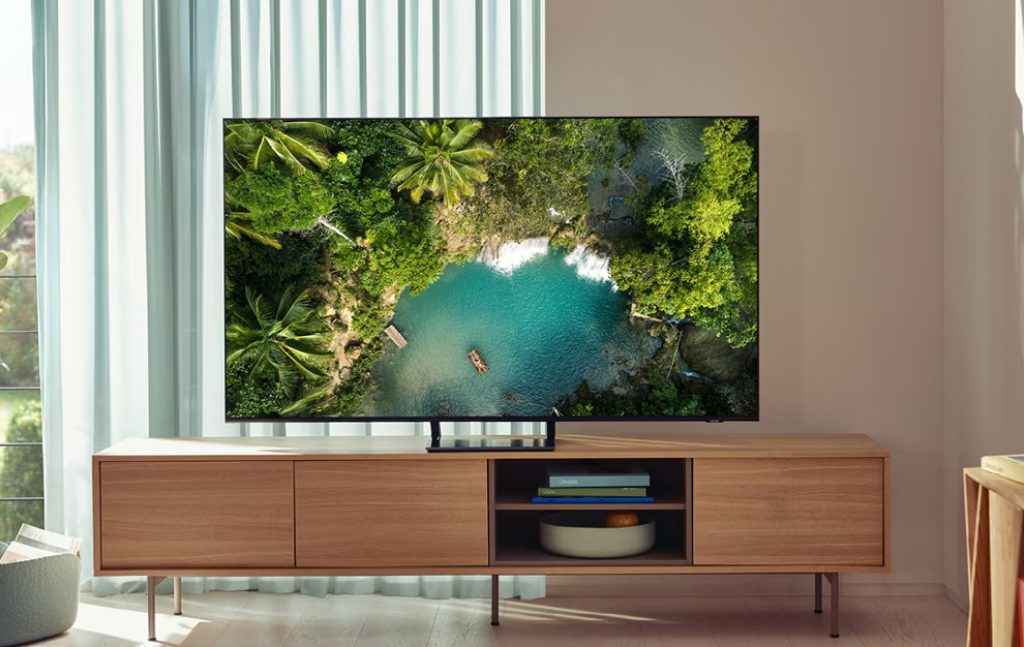
Apart from Quantum Dot Enhancement Film that all QLED TVs use, LG QNED also includes an additional Nanocell Film that integrates nanoparticles to absorb impure wavelengths from the backlight, thus once again resulting in purer R, G, and B components and purer colours.
Samsung denotes QLED TVs with mini LED backlights as Neo QLED TVs. LG QNED TVs may have both LED or Mini LED backlight depending on the model.
Another notable difference is that LG mostly uses IPS LCD panels and Samsung’s QLED displays can have both IPS or VA LCD panels. VA panels offer higher contrast but poorer viewing angles, while IPS LCDs offer wider viewing angles but lower contrast. Starting from 2024, LG has reportedly started using VA LCD panels in the QNED series TVs as well.
| Display Type | QNED | QLED |
| Quantum Dot Enhancement Film | Yes | Yes |
| Nanocell technology | Yes | No |
| Backlight | Mini LED, Edge-lit LED, Full Array LED | Mini LED, Edge-lit LED, Full Array LED |
| LCD Type | IPS LCD (mostly), VA LCD | VA LCD (mostly), IPS LCD |
| Brands | LG | Samsung, Hisense, TCL & others |
Sony’s Triluminous series of displays uses a combination of hardware and software features to achieve a wide colour gamut. Initially, when the Triluminous displays debuted in 2013, Sony used Quantum Dots to enhance LED backlight, but the current Triluminous Pro, XR Triluminous Pro and XR Triluminous Max displays don’t seem to use QDEF.
Also Read: RGB to PHOLED – 8 Different Types of OLED Display Technologies You Should Know About
But wait, there is another QNED
The term QNED is embroiled in a bit of controversy. Before LG registered the QNED Trademark for its displays, QNED was popular as Quantum Nanorod Emitting Diode, a self-emissive Samsung Display technology that is expected to succeed their latest Quantum-Dot OLED or QD-OLED displays.
QD-OLED displays work by using a blue light-emitting layer made of OLEDs. Then, they add a layer of printed Quantum Dots to create pure red and green sub-pixels. This is different from QLEDs, where the Quantum Dots layer is placed before the backlight reaches the LCD substrate. In QD-OLEDs, the Quantum Dots layer comes after the subpixels, facing the user.
The next Generation QNED displays being developed by Samsung are expected to replace the Blue OLED emission later with tiny Inorganic Blue GaN LEDs or nanorods that will be more durable and enable higher brightness. These LEDs are like tiny towers made of GaN that can emit light more efficiently.
FAQs
Q) Is QNED better than QLED?
QNED and QLED are similar technologies. Which one is better will depend on the specific models that you are comparing.
Q) Can you share some examples of QLED and QNED displays?
Some popular LG QNED TVs in India include:
- LG QNED 90
- LG QNED 85
- LG QNED 75
Some popular QLED TVs include:
- Samsung QN95C
- OnePlus Q2 Pro
- Hisense U6K
Q) Is OLED better than QLED or QNED?
Simply put, yes. Most modern OLED TVs offer a better TV viewing experience and impactful HDR as compared to LED LCD TVs.
Do OLED TVs still face the risk of burn-in?
Modern OLED TVs can handle the risk of burn-in quite well. For regular TV users, the risk has almost been mitigated. However, for hardcore users pushing their displays, such as gamers, there is still some risk.
Deepak Singh
Deepak is Editor at Digit. He is passionate about technology and has been keeping an eye on emerging technology trends for nearly a decade. When he is not working, he likes to read and to spend quality time with his family. View Full Profile